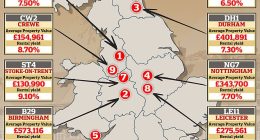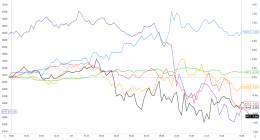
Resilience: It’s a vegetable-seed industry buzzword, and a mission — to breed genetically resilient varieties that stand up to pests, diseases and the rigors of a shifting climate.
Each resilient variety becomes a tiny, critical ingredient in a resilient seed system that supports agriculture, the foundation of a resilient food system.
And in the tumultuous 2020 seed-catalog season, resilience proved a valuable human trait as well, for seed company staff and their customers. Insights gleaned from that chaotic year of record sales can smooth the ground for the 2021 garden season, which officially begins this month, as new catalogs start appearing in mailboxes and online.
This time last time, no one could have seen it coming — sales spikes of as much as 300 percent that began immediately after a national emergency was declared on Mar. 13, echoing the World Health Organization pandemic declaration two days earlier.
“When many of us came back to the office Monday, we were astonished to see how many orders had come in,” said Joshua D’errico, marketing coordinator for Johnny’s Selected Seeds, which has 47 years of sales history for comparison. “We thought it was a blip, but it wasn’t.”
“Luckily, we had some warning from colleagues at other companies — a heads-up that they were seeing this volume,” said Heron Breen, a research and development manager at Fedco Seeds, serving Northeastern gardeners since 1978. “The bigger, first-line companies got flooded first, and when they were overwhelmed then we really got swamped, too.”
Fulfillment operations were pushed past capacity; sales had to be suspended by most every supplier, sometimes repeatedly, in attempts to catch up. Catalog requests and web searches for growing advice were way up, as well.
But sellers large and small, older and newer, have a reassuring message for home gardeners: They are well stocked. There are no seed shortages beyond what can happen in any farming year, when crop failure in one variety or another is always a possibility.
That may sound counterintuitive to those of us who saw “out of stock” labels on many website product pages last spring. Despite the wording, it often wasn’t because of a lack of seed on hand.
“It was more a matter of not enough hands to pack it into packets in time to meet the surge in demand,” said Andrea Tursini, chief marketing officer of the 25-year-old High Mowing Organic Seeds. “And it came near the tail end of our usual peak season — not a time when we are usually packing a high volume of seeds.”
Add to that the challenge of staffing up safely and operating within pandemic guidelines — plus mounting employee burnout — and something had to give.
Seed companies have worked overtime, skipping summer breaks, to refine and strengthen their systems. Now, before we start madly browsing their catalogs, it’s our turn as home gardeners to fine-tune our processes. Here are some thoughts on how to shop smart, plus some favorite catalogs. Each one feels as welcome as a reunion with an old friend.
Catalogs Are for Studying, Not Just Shopping
I don’t advocate hoarding seed, but when it comes to seed catalogs, I say more is better (whether in print or online). Each has its specialties. Plus, they make for good reading.
Before I had a shelf of garden books, seed catalogs were my reference manuals. If you read variety descriptions carefully, you’ll learn about the diversity of traits possible within a single crop, and notice that some broccoli makes one big head, for example, while others are “non-heading,” like Piracicaba, forming a cluster of smaller florets over a number of weeks.
Catalogs also provide expert growing information — not simply when to sow, or how far apart, but which varieties stand up to summer heat — insights that can help you order and then sow each in its time, yielding months of continuous lettuce for salads, for example.
The educational support seed companies provide has only deepened with the creation of digital resources. A leading example is Johnny’s Grower’s Library, which has seen “a huge increase in visits this year,” Mr. D’errico said.
Avoid Impulse Buying
My seed-shopping and garden-planning season starts in the darkness of a cool, dry cupboard, where I store my leftover seed — imperfectly, I admit, but well enough to get a second year out of virtually everything except perhaps onion, which most viability charts say lasts only one year.
A careful inventory of what remains is Step 1, to prevent duplicates that waste money and seed.
The occasional binge is encouraged; trying new things expands firsthand experience. But before I order seven — or 17? — tomatoes, I take two more steps. I see if a friend feels similarly inclined and wants to share an order. Then I think carefully about how much sunny garden space I really have.
Figuring out what there is room for is a bit more 3-D chess than just one piece per square on a static board. The pieces come and go; the same space can accommodate two or three acts. Early spinach, radishes and salad greens might be followed by pepper or tomato plants all summer. Then, after they are pulled, the garlic bulbs could go in.
Before placing your orders, study the basic rules of the game of succession planting (here’s how it works).
Want to enhance your sense of personal seed security? Order some open-pollinated varieties, not just hybrids (which may not reproduce true from seed), and save their seed for 2022.
Be Ready to Adapt (Like a Seed)
Despite all the preparations, no company can predict things like how many of last season’s new gardeners will order again, or if even more will show up for 2021.
In a tiny piece of normalcy, one element, at least, remained basically unchanged from 2019 to 2020, Mr. D’errico said. At Johnny’s Selected Seeds, the same 12 crops were the top-sellers among home gardeners, if in slightly different order. And among the top four — zinnias, bush beans, heirloom tomatoes and hot peppers — the order didn’t even change.
Still, sellers and buyers must be ready to adapt.
“Be flexible,” advised Ms. Tursini, of High Mowing Organic Seeds. “If Cherry Bomb tomato is sold out, try another cherry tomato variety.” You might find one you like better.
Also: “Order early, but don’t panic,” she said, a sentiment echoed elsewhere, perhaps most memorably by Mr. Breen, of Fedco Seeds.
“Be mindful and plan your garden,” he said, “not your dystopian survival plan.”
Where to Find Seed
I’m inclined to spend my seed dollars on organic seed for my organic garden, and in support of farm-based companies that don’t just buy and resell seed, but actually grow — and even breed — at least some stock. Most companies listed here fit that description.
I am a Northeastern gardener with a short season, so Northern-bred and grown seed is what works best for me. But I cannot resist the occasional specialty item from elsewhere, and I’m including specialists from other regions for such indulgences — and for fellow gardeners elsewhere.
Another caveat: Not every company has its 2021 offerings online or in print yet, so try to be patient.
In addition to the companies mentioned in this story — Johnny’s Selected Seeds, Fedco Seeds and High Mowing Organic Seeds — small Northeastern standouts include Hudson Valley Seed, Turtle Tree Seed and Fruition Seeds.
It is hard to imagine a more cold-adapted bean or tomato than those from the North Dakota-based company Prairie Road Organic Seed.
The Pacific Northwest is one of the most favorable and productive seed-farming climates in the United States, so it’s no surprise that some exceptional companies have taken root there, including Adaptive Seeds, Siskiyou Seeds, Uprising Seeds and Wild Garden Seed.
For gardeners seeking heat-adapted seeds for Southeastern gardens (or Northerners wanting to try okra and greasy beans), I’d suggest Southern Exposure Seed Exchange and Sow True Seed.
Companies serving niches with some of the toughest growing conditions also have my attention. Examples include Redwood Seed Company in Northern California, High Desert Seed and Gardens in high-altitude Colorado, Native Seed/SEARCH, a nonprofit in arid Arizona, and Snake River Seed Cooperative, in Idaho, focused on the Intermountain West.
Seed Savers Exchange is in Iowa, but its longtime mission as a nonprofit — the preservation of heirloom varieties — makes it a national resource. Some of its collection came by way of Glenn Drowns, of Sand Hill Preservation Center, also in Iowa. There is no online shopping cart, so expect old-school snail-mail ordering, but oh, the diversity.
For weekly email updates on residential real estate news, sign up here. Follow us on Twitter: @nytrealestate.
Source: | This article originally belongs to Nytimes.com









